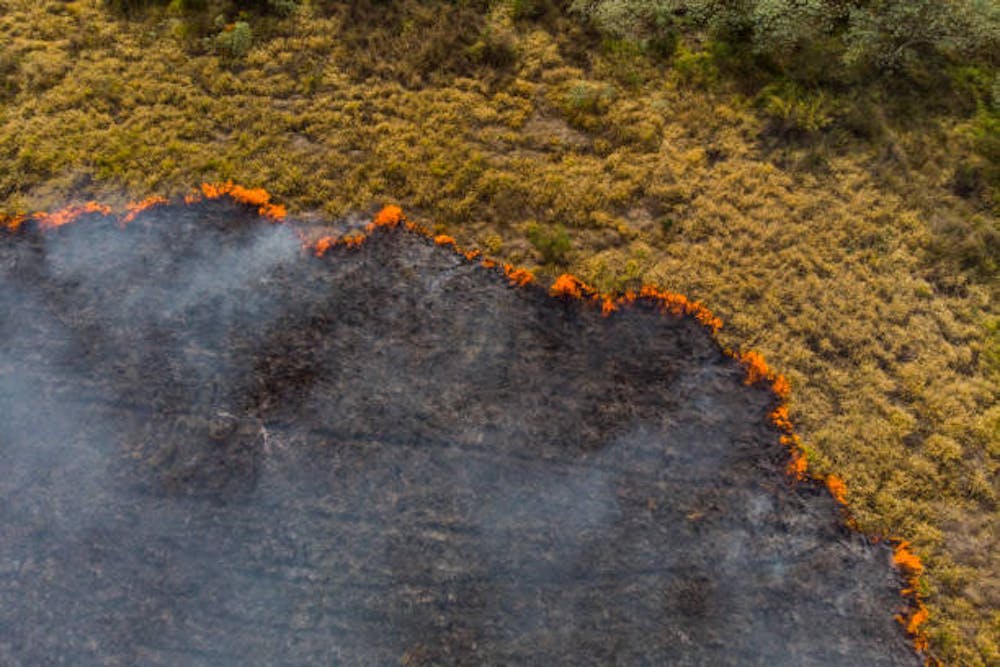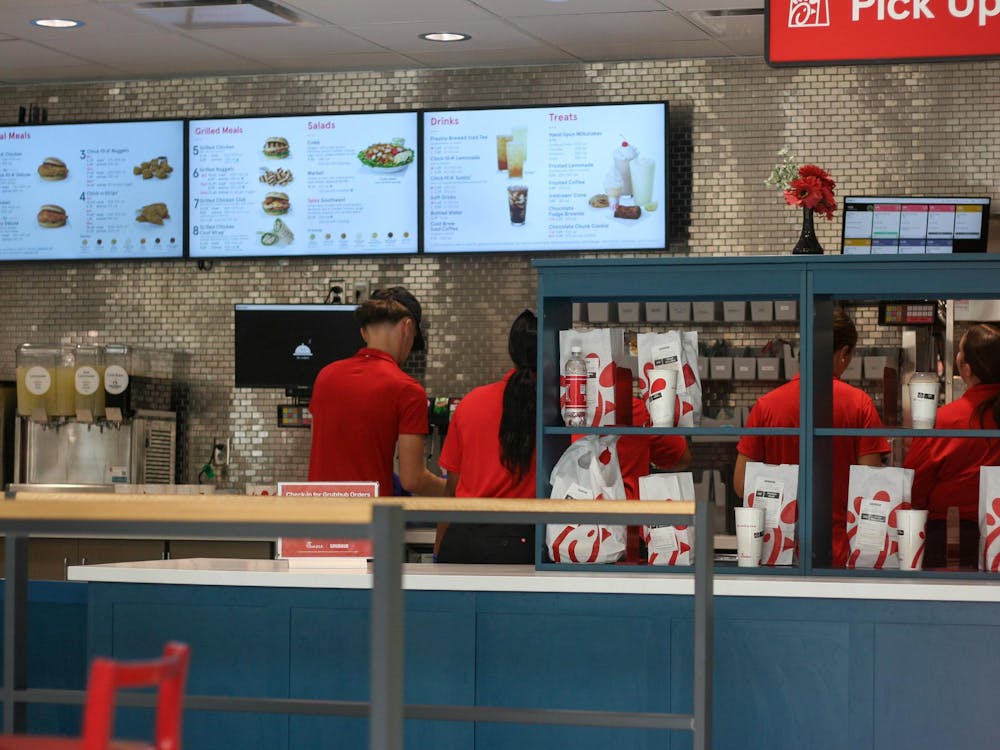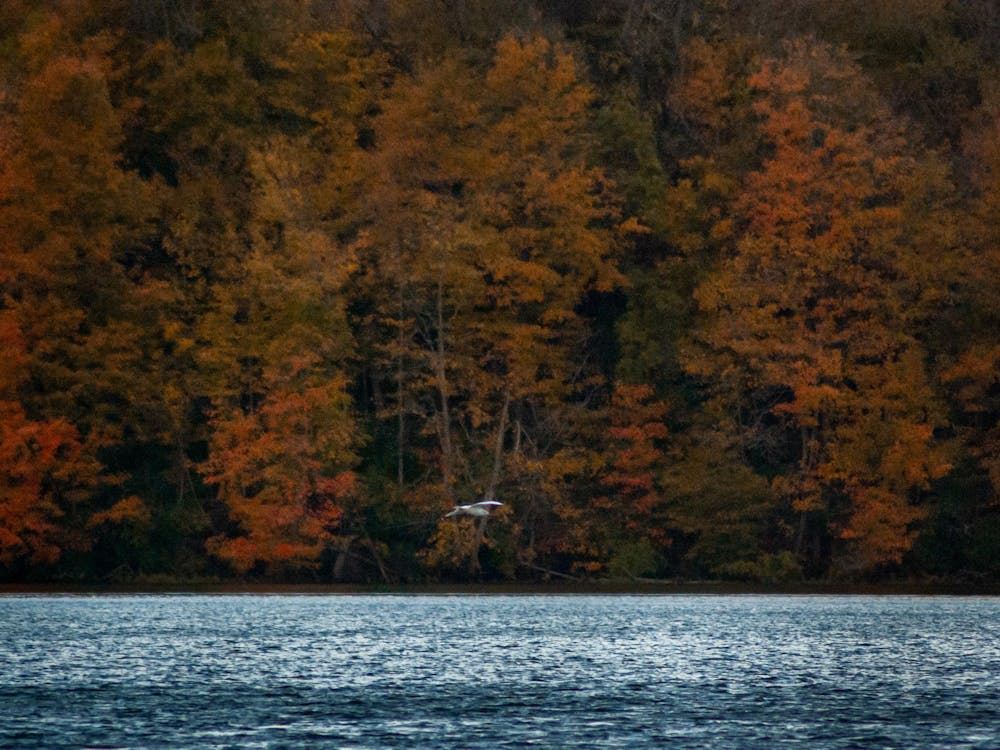BY: CELINE THORMANN
The recent news cycle has been inundated with stories of natural disasters of unusual intensity, duration, and span. With stories of disasters coming from all around the country and in every direction, it can be difficult to keep track of what is happening, where it’s taking place, and why. In recent weeks, we have seen stories of wildfires, hurricanes, floods, and tropical storms. Once one event ends and the news cycle moves on to the next, it can be difficult to remember the details and impact of earlier events. In this article, I am going to break down the causes, impacts, and potential lessons that we saw during The Bootleg Fire, which was contained about a month ago but whose story still remains relevant in discussions about climate change and sustainability.
The Bootleg Fire started in Beatty, Oregon on July 6th and combined with a separate fire called the Log Fire on July 12th. The fire was declared 100% contained on August 15th, after having burned more than 413,000 acres. The fire destroyed hundreds of structures and killed dozens of cattle, devastating farmers and ranchers across the region. One particularly alarming element of The Bootleg Fire was that it was large enough and intense enough to create its own weather. Rather than the weather influencing wildfires, wildfires are now influencing the weather. The clouds that are caused by the fire can create updrafts that leave behind vacuums that fire rushes to fill, creating an effect not dissimilar to a volcanic eruption, or a tornado made of flames. Fire clouds can also hurl hail, lightning, rain, and thunderbolts either in the area of the fire or in distant places. Fire clouds can make fires spread faster, and if there is lightning, they have the ability to start new fires. The Bootleg Fire was so large and out of control that it caused these extreme weather conditions, which increased its unpredictability.
The Bootleg Fire was also unusual in that it started so early. Historically, bad wildfires have occurred later in the summer, when the area has had more time to dry out. It is in this trend of earlier wildfires that we see the impact of global warming. The snow that falls in the winter is more wet than frozen, and therefore melts faster, and then the water left over evaporates faster. This causes a dangerous extended dry period where we can see such dangerous and deadly fires as The Bootleg Fire.
Additionally, wildfires are worse now than they have been in the past because of human activity, specifically logging. In dry forest areas like Oregon, old ponderosa pine trees served as a critical backbone and fire safety blanket for the rest of the forest. These old growth trees were fire resistant, and would survive when other trees did not. This in turn would cause the forests to grow in a heterogenous way, which is extremely different from the homogenous managed forests of today. When logging companies would cut down trees, a practice that is now at least somewhat limited, they would replant the area using only one kind of tree. The young, closely related trees that have never experienced fire before do not fare well against any wildfire, but especially the intense ones that we are seeing today.
Another factor that has been increasing the negative impact of wildfires has been the practice of thinning, which actually comes from good intentions. Wildfires need fuel to burn, and many times the fuel has been dried leaves, thistles, and shrubs on the forest floor. To limit the amount of fuel that wildfires have to burn, a popular method of forest management has been to thin the forest of smaller trees and decrease canopy density. The idea was that with less fuel, the fire would not burn as much. That is not what has happened. In fact, the opposite is true. Areas that have been thinned, like most of the forests in the Pacific Northwest, actually burn worse than areas that have not been thinned. This is because people who thin forests are forgetting one crucial fact: by chopping down smaller trees, you are actually creating more fine and flammable debris on the forest floor, which can then serve as kindling for large fires.
There is a way to properly thin forests and protect them from wildfires, and it is a method that indigenous communities have been using for years: prescribed burns. By thinning and also carefully burning the debris caused by thinning, it is possible to create more fire resistant forests. I bring this up because The Bootleg Fire unintentionally served as proof of the efficacy of prescribed burns. In an agreement with the Forest Service, the Klamath Tribes of Klamath Forest have been restoring the forest with ‘treatment areas’ where the Klamath Tribes use their historical methods of mechanically thinning and carefully burning patches of the forest. Two of the treatment areas were hit by The Bootleg Fire, and the initial results are promising. Compared to regions where the forest had only been thinned, areas that had been both thinned and burned fared better. The thinning and burning also seems to allow for a more diverse underbrush, which makes the forests resemble more closely how they would have looked before years and years of human intervention.
All put together, The Bootleg Fire was a frightening example of how human impacts are creating climate change and how that climate change is shaping the world around us in a hostile way. Without drastic changes, we are going to keep seeing larger fires earlier in the season, as well as more extreme after effects of the fires. However, until those changes can be made, there are some steps that can mitigate the worst of the damage. And there is still reason to hope. While recently burned forests seem hopeless and desolate, they can actually be ecologically diverse and important to the environment. There are species that can thrive amongst burnt wood, and the remnants of a burned area can serve as fertilizer for new growth. It will be vital to protect the burned areas caused by The Bootleg Fire as they heal and regrow. Hopefully, lessons learned from this disaster can be carried forward and stop other similar disasters from occurring.




